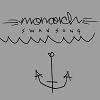- Administrator
- Albums and Singles
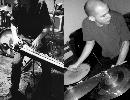 With the timing of this 7" single, this could be seen as a companion to this duo's recent and universally lauded The Radiant Mirror duo LP on Textile records. No less balls-out intense and exploratory, this rougher and more lively take on their musical pairing pins down the chemistry of this improvising drummer and Shaahi Baaja player.
With the timing of this 7" single, this could be seen as a companion to this duo's recent and universally lauded The Radiant Mirror duo LP on Textile records. No less balls-out intense and exploratory, this rougher and more lively take on their musical pairing pins down the chemistry of this improvising drummer and Shaahi Baaja player.
The title track sees both players immediately lifting off from the starter's block, Corsano attempting to slip around the sides of the fret-fucking Vibracathedral Orchestra member Mick Flower, at one point almost disappearing off the radar. The heavy raga shred of Flower's Shaahi Baaja (a Japanese Banjo that looks like ZZ Top took up the lap steel) calls to mind more than just its own singular voice, there are flutes, horns and pylon spillage sounds in there too. Despite the massive presence of the instrument, and its authoritative volume, there’s no sublimating Corsano; this is why this is a great improvisational team up.
On the reverse's "The Fifth Truth" both players show what the union is capable of when both are on full steam. Fueled on something illegal cut heavily with heavy vitamins and chili powder, they kick out explosion after explosion of razored notes that veer left of hitting chords. At times the sound is like water storage being emptied through the speakers, the monstrous bull headed guitar sound revealing itself in rare clusters of notes as banjoesque. The almost straight tank-track rhythm from Corsano shows he’s happy to play second fiddle to Flower’s sonic spread. Coating the pile-driven drums in luminous slashes, the duo really shows that they’re playing off each other for the greater good. The slight shifts and emphasis’ on parts of the beat shows Corsano’s inability to sit still on a pulse when there are so many other ticks and tricks to use. Tracking down single lines of enquiry and leaping from these into homilies of how to really investigate an instrument, Flower drags circles from the fret that sit just right with Corsano. These two sides of perpetual peaks ram home the chemistry of Corsano and Flower, another great pairing of minds.
samples:
Read More
- Administrator
- Albums and Singles
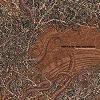 After their live performances and a brace of self released demo CDs caught my attention, I have been eager to hear this band's debut. The sludgy doom presented here is as good as I was expecting but unfortunately the sound quality of the album leaves a little to be desired, especially for an album that is backed by a label and being properly distributed. That being said, Wreck of the Hesperus have offered up a noble sacrifice at the altar of doom.
After their live performances and a brace of self released demo CDs caught my attention, I have been eager to hear this band's debut. The sludgy doom presented here is as good as I was expecting but unfortunately the sound quality of the album leaves a little to be desired, especially for an album that is backed by a label and being properly distributed. That being said, Wreck of the Hesperus have offered up a noble sacrifice at the altar of doom.
Aesthetic Death
The three songs on The Sunken Threshold are at first listen fairly straightforward examples of doom but with repeated exposure, the layers peel back to reveal more and more detail. The song structures are constantly morphing: it sounds like it is all built on the foundation of one or two riffs but subtle variations and changes in the riffing give rise to new tangents and avenues for the band to explore. The production is unfortunately not as sharp as it could be: the oomph of Wreck of the Hesperus' live presence has not been captured successfully. Instead of bowel wrenchingly huge, the album sounds a little thin. The drums in particular feel hollow, especially on "Stop the Black Coffins," where it sounds like the kit is made from cardboard boxes. With the volume cranked the sound does become better but at lower volumes it does not pack the punch it should.
Luckily when "Grave Signal" erupts from the speakers any thoughts of an inferior production are blown out of the window. What it lacks in polishing it more than makes up for with ferocity. Wreck of the Hesperus pick the pace up and take no prisoners. The vocals are drenched in reverb and their black roar drips from song like venom. The unexpected electronics that make an appearance towards the end of the song add a new slant to Wreck of the Hesperus’ sound. When the instruments and vocals begin to be swamped by a glacier of noise and glitch-ridden drones, the tone of the song lowers to new levels of evil.
One thing that I do not like about Wreck of the Hesperus is their use of vocal samples from movies. This has never worked for me, it is a throwback to the mid-'80s to early '90s when every second rate metal and industrial act would include a line from The Wicker Man or some splatter movie. In the past, Wreck of the Hesperus have relied quite heavily on this cliché. Luckily on The Sunken Threshold the samples are kept to a minimum and are not too intrusive and do not detract from the music but I do find them to be an annoyance.
Quibbles aside, The Sunken Threshold is relentlessly brutal. What it lacks in terms of production it makes up for in spirit. Although, in the future I hope they opt for better recording facilities and record the classic album that I know they’re capable of.
samples:
Read More
- Administrator
- Albums and Singles
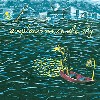 One of the problems with having reached the pinnacle of composition on the album prior is that expectations are high, everyone is looking, and your songs can now be heard every Wednesday on NBC. But Explosions in the Sky marches onward, undeterred by such expectations.
One of the problems with having reached the pinnacle of composition on the album prior is that expectations are high, everyone is looking, and your songs can now be heard every Wednesday on NBC. But Explosions in the Sky marches onward, undeterred by such expectations.
Temporary Residence
They experimented a little with their submission to their label's Travels in Constants series, tinkering with fewer dynamics, more restraint, and even some original dialogue about their broken-down van (the van is, I believe, the conceit of the entire EP.) All of a Sudden I Miss Everyone incorporates what sounds like vestigial themes from the EP but decorates them in more typical explosiony fashion. The concentration and deliberation, the anguish and triumph, the celestial swells and swoops; all of it is here.
"The Birth and Death of the Day" germinates in low-powered static for thirty seconds until it unleashes amniotic fluid all over the place with one concussive punch. The tide then ebbs into a soft marching theme which, in turn, grows into a loud marching theme once the drums decide to make it their own. Is this the musical portrait of one day's arc, as suggested by the title? If so, I hesitate to embrace this as my typical day. The vicissitudes are too harsh, too steep. My day has (and needs) more constancy and steady plateaus. But as a song, it gets me, as Pat Benatar might agree, all fired up. This introduction bleeds into "Welcome, Ghosts," the song which sounds closest to those from the The Earth is not a Cold Dead Place. It is a study in acceleration and deceleration. The song winds up and winds down endlessly, dropping away and returning without warning.
Imagine when you first learned how to drive a manual transmission. Put that to music, perhaps a little more elegantly and sustained, and you have the song. "It's Natural To Be Afraid," the album's centerpiece, is also its longest offering, though the first five minutes feel more like exposition than full-fledged song. It's going to become a live favorite for the band, if not already, because it has plenty of parts for band members to fall to their knees and bang the hell out of their instruments. "What Do You Go Home To?" has an eerie resemblance to the last scene of Heat where Pacino is chasing Deniro all over the airport and a Moby song, one where he tries too hard to be Brian Eno, is playing loud enough to drown out the airplane engines. The periodic cascading piano recalls both the song and the scene and I think I might be doing some horrible injustice comparing Explosions in the Sky to Moby but what I think I am trying to say is that I sort of like the sound (of both of them, embarrassingly) even though the Explosions piece seems more like a tendon or ligament between songs than its own fully-wrought piece. It joins up to "Catastrophe and the Cure," the album's best song which busts through the door, sits down for a cup of tea, and then frenetically runs around the room for the next two minutes. The song necessitates the demulcent piano coda of "So Long, Lonesome" at the end of the album just to come down from the ecstatic peaks of "Catastrophe."
As Explosions evolves, the albums they are creating more closely mimic the band's live performances, where they have acquired acolytes more devoted than Attis. Interludes are more structurally built into the longer songs and some songs have become interludes unto themselves; turn on the stereo and switch off the lights and you have a home-concert. For anyone who has seen the band live, this is what you would wish: to capture just a fractional essence of an Explosions show, bottle it, and toss it into the album cover's city-devouring, wine-dark ocean.
samples:
Read More
- Administrator
- Albums and Singles
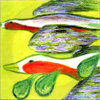 This latest Birds of Delay communication shows a steelier hide than recent releases, the fluctuating red-hot treble liquefying the layers into a shimmering coating. Like 24/7 road works in your jawbone, this slow burner begins at the harsher, more dissonant end of the spectrum only for familiarity to find a sort-of melody and a kind-of arrangement.
This latest Birds of Delay communication shows a steelier hide than recent releases, the fluctuating red-hot treble liquefying the layers into a shimmering coating. Like 24/7 road works in your jawbone, this slow burner begins at the harsher, more dissonant end of the spectrum only for familiarity to find a sort-of melody and a kind-of arrangement.
Falling somewhere the slo-mo popping of a cordite bong bubble and the last epic gasp of a moribund Frank Herbert worm this single sided 7" spills severe frequency abuse. Dive bomb screams come and go like sonic whittlings torn out of hissy mix, this alone might have softened the body but left the brain untouched, but deeper listens reveal something nearer the bottom end. It's difficult to discern, it could be bowing or a banging on the low ended amplified strings or some broken bass part quietly implied and looped. Whatever it is, it works. This counterpoint to the whitewash blister becomes more central to this untitled piece with each listen, despite its ambiguity. This semi-hidden part shifts this track from magnesium burn to something a little more controlled.
sample:
Read More
- John Kealy
- Albums and Singles
Bone-crushingly heavy doom is not something I think of when it comes to French music but Monarch pulls it off beautifully. Musically they sit on the same shelf as Khanate, Sunn O))), Ocean and Moss; so there is nothing spectacularly new about their riffing. However, their delivery is spot on. All the instruments sound just right, the mix is great and at appropriate volumes "Swan Song" is deeply hypnotic. The riffs are the right side of monolithic, each chord pummels its way out of the speaker. The vocals are particularly killer, Emilie screams her lungs up without sounding like a parody. It is hard to find a woman who can do great doom vocals but Emilie is the icing on the cake; I am itching to hear the rest of this album.
Read More
- Mike Barrett
- Albums and Singles
Wiese has produced a CD of ambient passages that have crossed over to the dark side of the New Age. Nothing on here strikes me as terribly outstanding, though for the most part it attracts too much attention to even be considered background music. A difficult place to put an album of such innocuous style.
Tracks range from ambient passages to more rhythm based songs, like "Deer's Gate," with a down tempo near-trip hop groove, or "Insect Ride," based on a plodding horse trot beat, accompanied with cello, conjures images of Vangelis' "Chariots of Fire" set to the Special Olympics.
The closing track, "Sweet Lemon," a simple, delicate cascade of insectoid sounds, is by far the best on the disc, even though its far too short, too little and too late to redeem the album. Even with its Vidna Obmana-esque closer, "Perfume" is little more than a great way to go stir crazy on a rainy Sunday afternoon.
Read More
- Administrator
- Albums and Singles
Jon Mueller and Martijn Tellinga have started a collaboration to explore the musical dialogue between the instrumentalist and realtime computer-performer. Their mutual interest in the outlining and structuring of improvisation, both in sonic properties and compositional shape, resulted in an ensembled playing that is partly responsive, partly autonomous.
During their residency at the Extrapool studio in Nijmegen, Netherlands December 2005, they experimented with a system that consisted of live-sampling and processing of Jon's playing, on top of a layer of pre-recorded soundmaterials taken from a previous session. Crucial to this system, was that the actual triggering of the samples and processing in the computer during performance was also caused by that same playing; i.e., while Jon was improvising he not only provided new sonic material for recording, but also triggered previously recorded events. The realtime manipulation and transformation of these events was done by Martijn following that same structural order. This experimental system was developed to get to a musical body that can either blend into one (percussion and computer) or exist as two entities that function in an autonomous way (bypassing the triggering and playing the computer as a stand-alone instrument, using the same set of soundmaterials) and perform by listening and responding to each others input. This can be seen as an attempt to get beyond the many electro-instrumental collaborations where the computer-performer seems to function as a huge effect-processor of the instrumental input, and by doing that, reduces the instrumentalist to a soundsource for realtime processing." - from label press release
More info on Martijn Tellinga at: www.martijntellinga.nl
Read More
- Administrator
- Albums and Singles
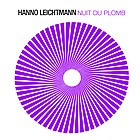 Music that was made to illustrate a slide lecture on Hans Henny Jahnn's novel The Night of Lead, a tale of alienation and sado-masochism which was greeted with revulsion and largely forgotten. This is the first release under his own name by Hanno Leichtmann, though fans of his work with Static and Pole can listen without too much trepidation.
Music that was made to illustrate a slide lecture on Hans Henny Jahnn's novel The Night of Lead, a tale of alienation and sado-masochism which was greeted with revulsion and largely forgotten. This is the first release under his own name by Hanno Leichtmann, though fans of his work with Static and Pole can listen without too much trepidation.
Anyone familiar with Jahnn's images of (what was then assumed to be) sexual-pathology and the broader themes of his work—such as in the trilogy, Fluss ohne Ufer, which explores the dangers of delving into the secrets of creation—may find Leichtmann's accompanying music surprisingly muted. Perhaps the idea was to create contrasting sadness and quasi-melody as, apart from one horrendously overly-poppy track, there is nothing sounding remotely offensive, repulsive or even mildly irritating. Those of us who approach the record without knowledge of the book or the slides may find that it swells with gradual and affecting motion, successfully balances chill and warm electronics, enjoying a clever ratio of space, tension, rhythm and release.
Opening track "Anfang" is briefly reprised by the final one, "Abspann," for a top-and-tailed effect that is as Elizabethan as it is suggestive of life's circularity or inevitability. I wondered if "Wind" referenced the dusty silent film or meant some cranking motion, before deciding that it really didn't affect my enjoyment one way or the other. Everything progresses in a pleasantly unfussy, lonely and downtempo manner until about 18 seconds into "Elvira" when things veer into an innocuously synthetic cul de sac of horrid blandness, almost threatening the entire introspective journey. A few minutes of silence or dental drilling would have preferable. The record's peak is "Keller" which sounds like a throbbing life-support system encased in ice, a hopeful blip heard through dark space, or a forlorn vessel pushing perilously through fog—a lighthouse winking out of view. Brilliant.
Jahnn also published 17th-century organ music and gained an international reputation as a builder and renovator of organs. The church organ can be the most dogmatic and undemocratic of instruments, so this aspect of his life is of no interest to me. Actually, since there appears to be little happening on this record, it's a slight puzzle as to why I keep playing and mostly enjoying it. Perhaps because, according to listener mood, Nuit Du Plomb is both nothing much at all, and conversely, a splendid aching sigh of a record. Certainly, a desire to both read the book, and see the lecture, has been kindled. Until then, in my slideshow: A cricketer leaves the crease. Tears are wiped away unseen. Icecaps dissolve and fall. A ship is bound for where? Cities decay. Someone gives themself away too easily. Clocks never stop. A man regrets what he did to a friend. Leaves fall and become sodden. Tea goes cold and cakes burn. Machines lose their will to go on, but go on. Ho, and indeed, hum.
samples:
Read More
- Administrator
- Albums and Singles
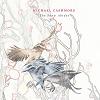 Last year's Sleep England, Michael Cashmore's first solo album under his own name, eschewed the verdant soundworlds of Cashmore's previous work as Nature and Organisation in favor of austere, minimal simplicity. This new EP is somewhat of a return to form, featuring lush arrangements and guest vocals by Antony, singing lyrics written by David Tibet.
Last year's Sleep England, Michael Cashmore's first solo album under his own name, eschewed the verdant soundworlds of Cashmore's previous work as Nature and Organisation in favor of austere, minimal simplicity. This new EP is somewhat of a return to form, featuring lush arrangements and guest vocals by Antony, singing lyrics written by David Tibet.
Sleep England sounded a like Michael Cashmore's version of one of those Wyndham Hill solo guitar records, a style seemingly at odds with his more familiar work in Current 93. Though his compositions for guitar and bass were still shot through with that trademark sense of melancholy beauty, and still consciously drew from the nostalgic wellspring of 1960s British psych-folk, as well as medieval and baroque composition, it was hard not to miss the lush arrangements and guest vocal turns that made Cashmore's 1990s albums as Nature and Organisation so memorable. I can remember first hearing the N&O albums after years of enjoying records by Current 93 and Death in June, and thinking that Cashmore, whether he intended to or not, had assembled the world's first (and only) Apocalyptic Folk "supergroup," tying everything together with his impressive ability to write and arrange such ravishing, evocative music. Though Sleep England was an admirable effort that I quite enjoyed, I secretly held out the hope that Cashmore would return to the style that had informed such classic works as Beauty Reaps the Blood of Solitude and A Dozen Summers Against the World. And with this EP, my wish comes true.
The Snow Abides forms an abbreviated narrative of sorts, opening with the instrumental "My Eyes Open," which serves as a gentle overture for the songs featuring Antony on vocals. The first track begins with a fragile piano figure, recalling Cashmore's unadorned piano compositions for Current 93's Soft Black Stars. Any fears that this EP might share that album's instrumental minimalism quickly fade, however, as a gorgeous swell of strings joins the piano's melancholic refrain. It is a relatively small arrangement, a scaled-back chamber orchestra of sorts, but it sounds resplendent in comparison to the spartan quality of Sleep England.
The title track follows, with Antony's vocals over Cashmore's impressionistic piano melodies. David Tibet's text is perhaps a bit too dense for Antony's vocal talents, which are often better served with simpler phrases and greater structure, but Antony still does an admirable job with an elaborate and meandering lyric. Antony sings: "Royal black and blue/I am not lost (yet little stars)/In the doorway I catch a sign (shuddering still)/No, there is too much, there is too much," the parenthetical phrases representing moments when the vocal is attenuated and moved to the background, or to one side of the stereo channels. At other times, Antony's voice is multitracked for emphasis. This creates an interesting sense of spatial depth on the EP, though I can't help but feel that the vocals are much too prominent in the mix, often drowning out the music.
Such minor quibbles aside, the songs here are somber elegiac, and thus hard to "enjoy" in a traditional sense. However, a sense of beauty and poetry pervades the EP. It is hard not be touched by "How God Moved at Twilight," an evocation of the simple Christian piety and longing of childhood, which threatens to be eclipsed by intervening years of wandering and disillusionment. Cashmore's arrangements on this track are particularly strong, alternating moments of bare piano melody with bursts of lush symphonic catharsis, including flutes and clarinets. "Your Eyes Close" answers the first track with Antony's final vocal on a particularly emotional lyric by Tibet, using images of sleep and wakefulness as symbols for vivification and mortification: "You close your eyes and I die/Whilst others in sleep follow lambs/I look at my hands and count the sun making another scar across my sky."
The EP's final track, "Snow No Longer," musically figures an emotional thaw, with piano tones left to resonate and echo, emphasizing the distance and loneliness of mankind's estrangement from divinity. Finally, in a brief footnote recalling the most spine-chilling moments of classic Apocalyptic Folk, the song fades out in an atmospheric tangle of decaying sound, punctuating by the pristine chime of a single bell. It is a perfect way to conclude an all-too-brief EP that nonetheless manages to communicate a profound spiritual longing through Cashmore's disarming, plaintive melodies.
samples:
Read More
- Bryan Neil Jones
- Albums and Singles
Wolf Eyes kick things off with the bleating of toads from hell. These bursts of sounds gradually change tone from organic to industrial. Occasional whistles break the monotony and a repeating clicking is the only constant. Utterly non-musical, its like watching random sound objects go by on a conveyer belt.
Failing Lights ups the intensity ante a bit. Loud elongated screeches seesaw back and forth in hurdy-gurdy-like fashion producing something close to, gasp, a melody. The timbres are richer. Factory furnace rumbles join the fray, and slowly all the elements are muffled and strangled away. Screeches become distant moans and so she fades. It is by far my favorite side. Spykes disappoints with a forgettable vacuum hum which gradually gets more high pitched. Organ notes leak through the static and everything cuts out to just lo-fi mic clatter and low freq farts. I yearned for some horns.Nate Young closes the show: metallic banging with demonic voices in the far distance. Shimmering cymbals serge through. Shronky horns appear (so perhaps this is Olsen’s side) while chains and buckets complete the picnic.
Dicking around seems to be the extend of the accomplishment here. I thought Burned Mind was a brilliant song cycle which will some day be used as evidence that noise is, in fact, music. The band has also proved themselves worthy countless times over with numerous horror/shiver/headache inducing noise-bomb-scum-jazz-post-dub-what-the-fuck-ever tapes and CD-Rs. Little of that subversive genius is on display here. I was expecting more from a double LP picture disc.
Read More
- Scott Mckeating
- Albums and Singles
Wander around inside these 30 seconds, the depth of the sound making if seem so much longer, this cassette begins to feel like it’s an hour long piece, not a brief loop. The splutters of synth and tape collage squelch sound like they were hauled through bubbling bath scum before being slapped onto tape. Return of Eternal Void, Fear of Infinite Life feels like its constantly extending, the several split second edits/gaps make it difficult to tell where the loop ends or begins. These points also help to pin down the locked groove aspect of the cassette, building a rhythm from the highs and lows. Maybe this is the final proof I need that my short term memory is utterly shot to shit, or that this piece of heavy tar, extra-terrestrial ousting has a reach far beyond its brief content.
Read More


